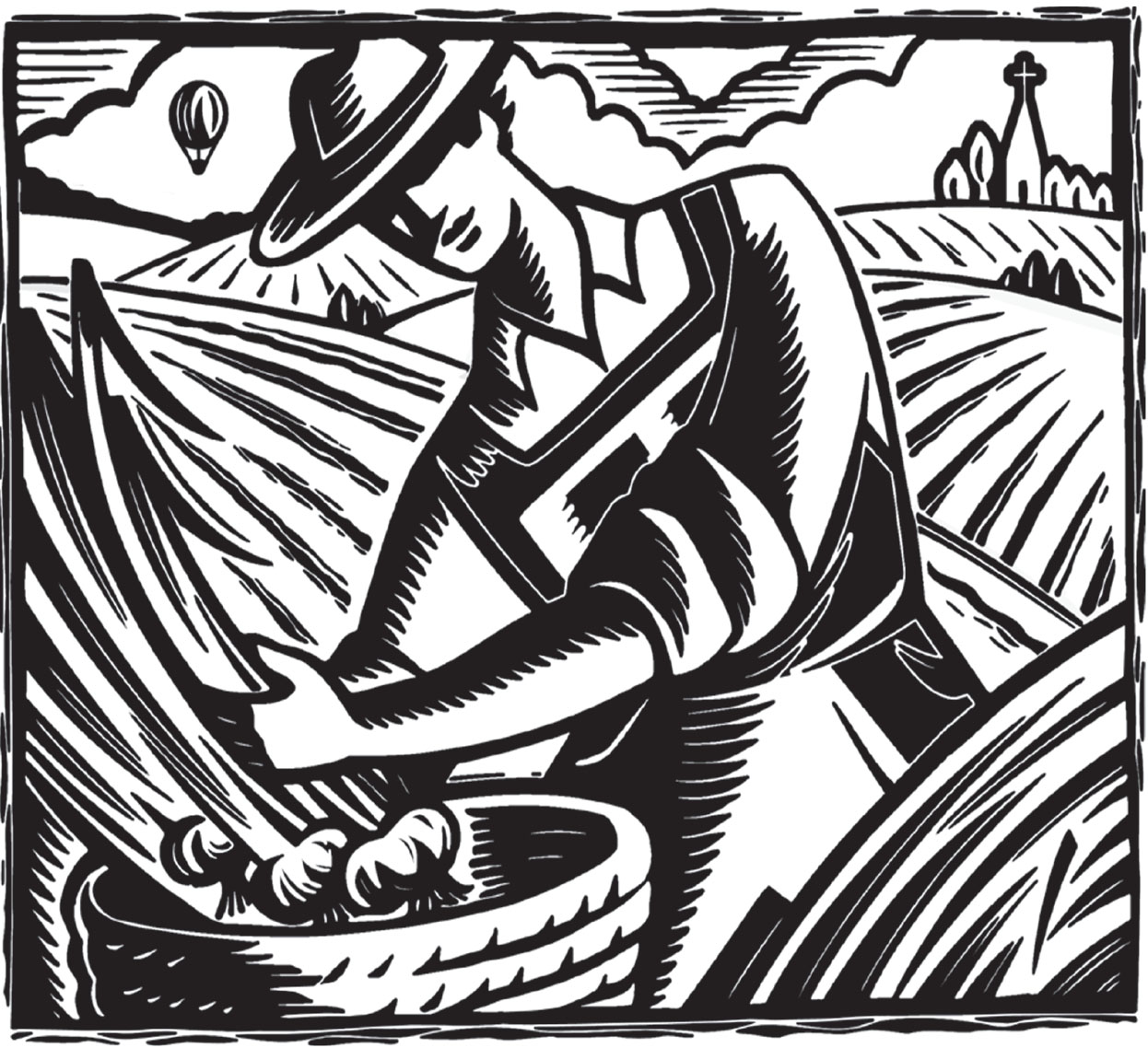 Garlic is believed to have originally grown wild in the mountains of south central Asia. Summers there are very hot and dry, and winters are long and extremely cold. Those ancestral garlics grew in thin, sandy soil of poor quality and received very little rainfall during their growing season. Garlic is an ancient survivor that will grow almost anywhere, but, like most plants, it responds well to the more favorable growing conditions found in your garden or planter box.
Garlic is believed to have originally grown wild in the mountains of south central Asia. Summers there are very hot and dry, and winters are long and extremely cold. Those ancestral garlics grew in thin, sandy soil of poor quality and received very little rainfall during their growing season. Garlic is an ancient survivor that will grow almost anywhere, but, like most plants, it responds well to the more favorable growing conditions found in your garden or planter box.
Garlic grows best in a rich, fluffy, well drained garden soil. We build organic matter and fertility in our soil by growing and turning under cover crops in a three year rotation with our garlic crop and other vegetable crops. We add as much compost as we can make to the soil and we also add a good organic nitrogen fertilizer when we plant.
In those areas of America where the winters are cold enough for the ground to freeze solid (Illinois), garlic is usually planted sometime in the week before or the week after October first. Garlic should be planted four to six weeks before the ground freezes solid so that its roots become well established before winter. In those areas of the country where the ground does not freeze solid in the winter, garlic may be planted anytime from October through January. Check with good gardeners in your area for a local planting date.
To plant your garlic, first break the bulbs apart into individual cloves, being careful not to damage the bottom end of the cloves when you do. All of the cloves will produce a bulb of garlic, but the largest cloves will produce the largest bulbs. The roots will grow from the scab on the fat end of the garlic clove, so that end should always be planted facing down. Plant the cloves six to eight inches apart and deep enough so that there is an inch to two inches of soil covering the pointed end of the garlic clove from which the top growth will emerge. Rows should be ten to twelve inches apart, with not more than four rows in a single bed. Your garlic will also grow quite happily in a pot on your balcony. Just keep each clove you plant at least two inches from the side of the pot and four inches from each of the other cloves you plant.
Once your garlic is planted, add some organic nitrogen fertilizer or compost and then mulch the bed six to eight inches deep with a good fluffy mulch such as oat or barley straw. This mulch will help keep the cloves from being heaved out of the ground by frost, and will also conserve moisture in the spring and help prevent the growth of weeds in your garlic bed.
In the spring, typically sometime in the month of March, the garlic will begin growing right up through the mulch. After you see the plants emerging, it is a good idea to check the spots where they have not come up yet, as sometimes they may require a little assistance from you to push up through the mulch. Once the garlic is up, it is important to keep it well watered just as you would any other garden vegetable, as garlic especially needs adequate water in order to produce large bulbs. It is also important to keep the garlic bed weeded well if you want to have a good yield.
Hardneck garlic plants produce a flower stalk with small bulbils in a capsule at the tip of the stalk. This stalk should be removed from the plant about one inch above the top leaf so that the plant will direct its growth energy down into the bulb. We cut this flower stalk off in early June when it is between six and eight inches long and still tender enough to enjoy in stir fries and pesto.
Garlic is usually harvested sometime in the beginning of July. As the garlic matures, the leaves begin yellowing from the tips of the leaves in and from the bottom of the plant upward. You can tell that the garlic is ready for harvesting when approximately half of the leaves have turned yellow and half are still mostly green. Stop watering your garlic about a week before the harvest so that the soil around the bulbs can dry out. This will allow them to be pulled cleanly from the bed. Loosen the soil around each plant with a garden fork and then pull the garlic carefully out of the ground, keeping the whole plant intact. Rub the dirt out of the roots and take the garlic immediately to a cool, shady spot.
Form bundles of about ten plants each and tie them with twine about six inches above the bulbs. Then hang the bundles to cure, with the bulbs hanging down, in a dry shady place with good ventilation. After three or four weeks, the plants will have dried down and you can trim the roots to about half an inch in length and remove the dirty outer skin of each bulb. Then you can either leave the bundles hanging or cut the tops off about an inch above the garlic bulbs and store the bulbs in a net bag in a cool, dark, well ventilated place until you are ready to enjoy them.
